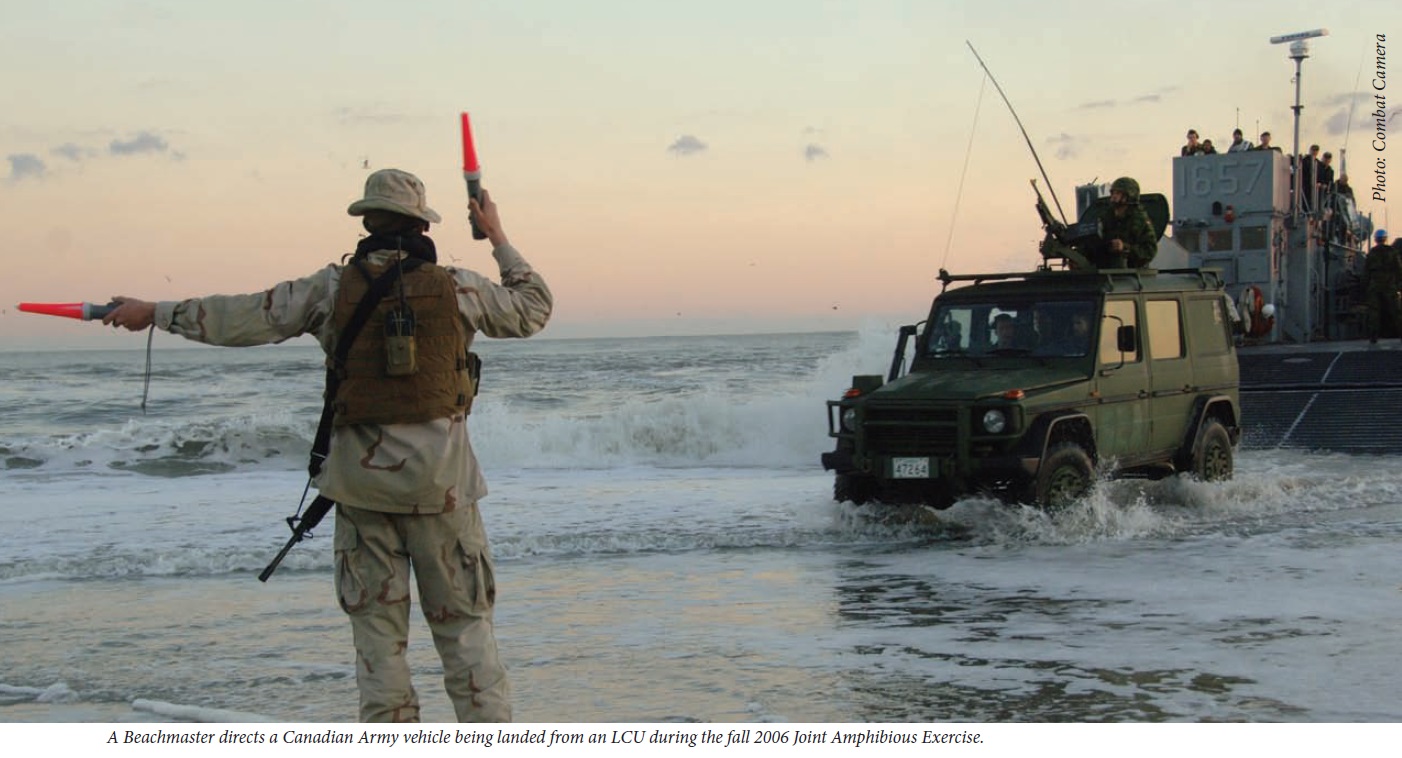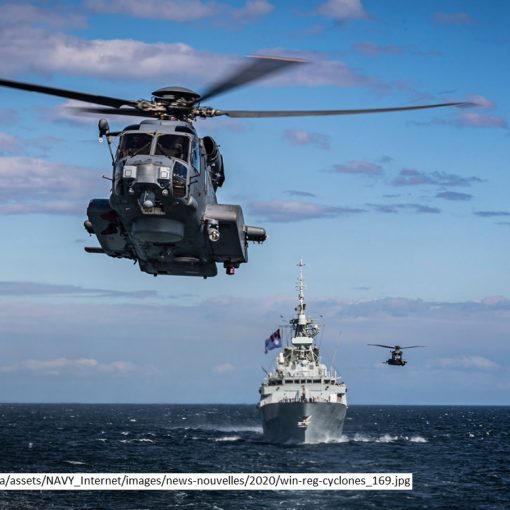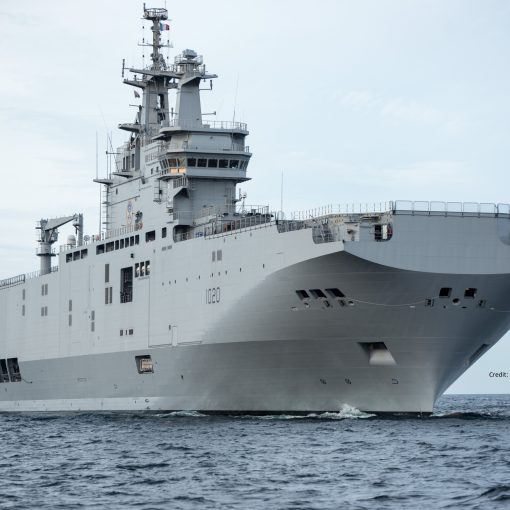By Dr. Ann Griffiths, 11 February 2022
We’ve all seen depictions of the D-Day landings in France in the Second World War. These landings provide a classic example of how navies transport people and materiel to shore. A recent example would be humanitarian assistance or disaster response missions -- the RCN response following the earthquake in Haiti in 2010 for example. In these missions, a key element is transporting people and food, water, building materials to shore, often in the absence of port infrastructure. How is this done? Well, as the 43rd in the Naval Association of Canada’s Briefing Note series explains, there are a variety of methods. There are:
• floating pontoon platforms (in the British tradition these are referred to as Mexeflotes1);
• landing craft that can be launched off the deck of a ship via a crane;
• helicopters to transfer people and material; and
• landing craft that can be floated on/off a ship via well deck on the ship.
This Briefing Note first discusses these options, and then examines the capabilities of the RCN in this regard. Check out Briefing Note #43 Ship-to-Shore Connectors, available at https://www.navalassoc.ca/wp-content/uploads/2022/02/BN43-ship-to-shore.pdf
1Where does the word ‘Mexeflote’ come from? The name can be traced back to the United Kingdom. In 1946 the Experimental Bridging Establishment (EBE) of the Royal Engineers merged with several other organizations to form the Military Engineering Experimental Establishment (MEXE). It was responsible for many innovative research, logistic and military engineering projects, including the Mexeflote. “A Trip Down Mexeflote Lane,” Think Defence, 3 April 2011, https://www.thinkdefence.co.uk/2011/04/a-trip-down-mexeflote-lane/.






2 thoughts on “Transporting People and Material from Ship to Shore”
Time to stop the delusion of an AOR being a JSS. Canada and Norway ordered AORs instead. The Berlin class has NO troop carrying capacity.
Absolutely Dave. The Protecteur class are, and never will be a JSS or a “true” Strategic Sealift Capability. Just another AOR. “Please fuel me, then go in that exercise corner area and leave the “big boys” alone”! What Canada really needs is a “real” HA/DR Sealift Capability like 2 or 3 Juan Carlos class LHDs. Then we would truly have a capability to really put resources where needed anywhere.